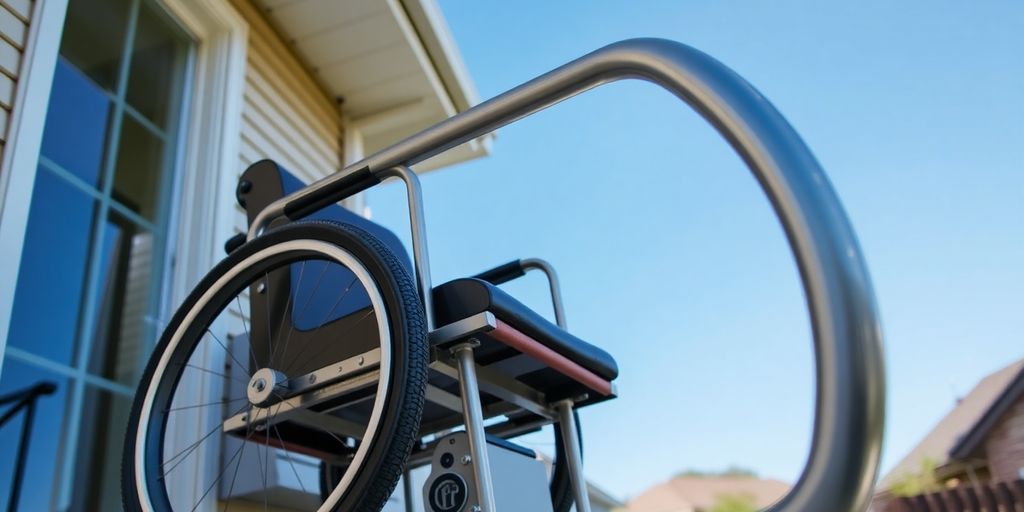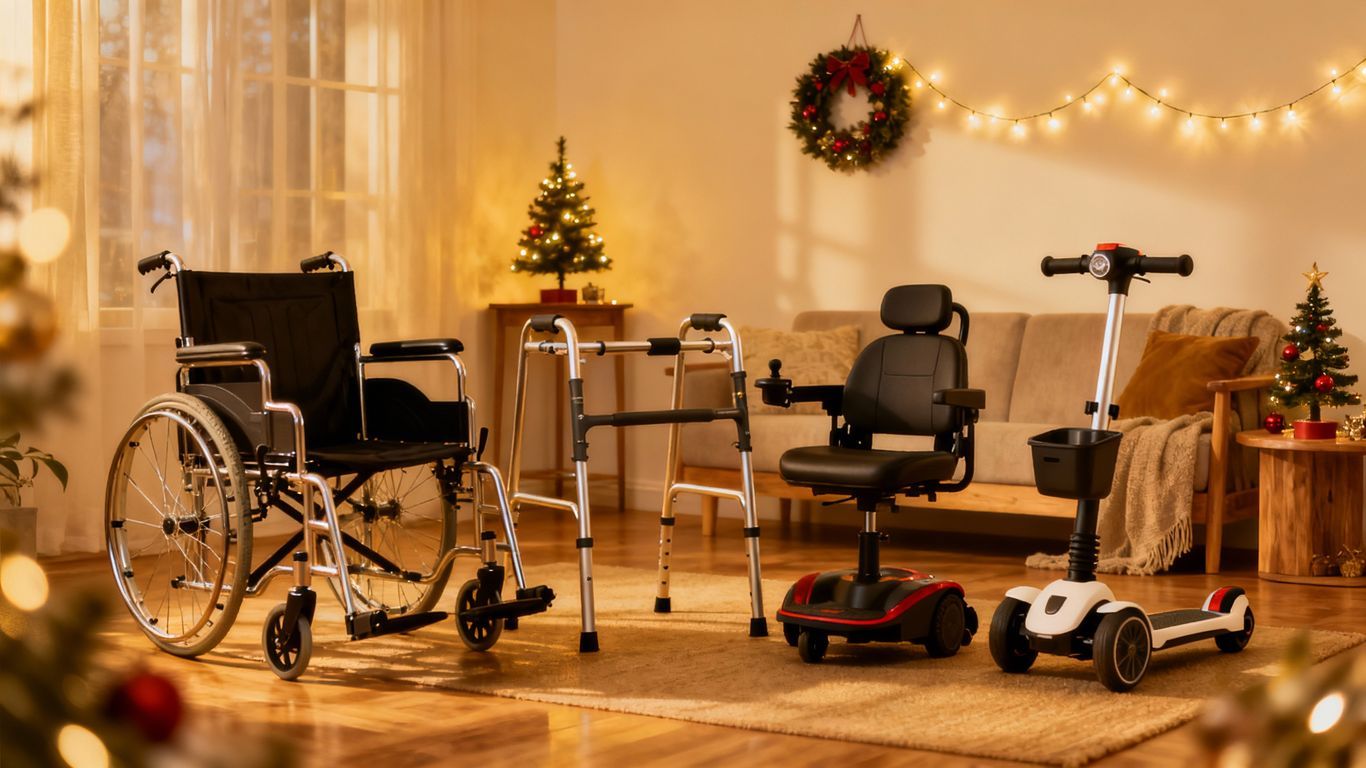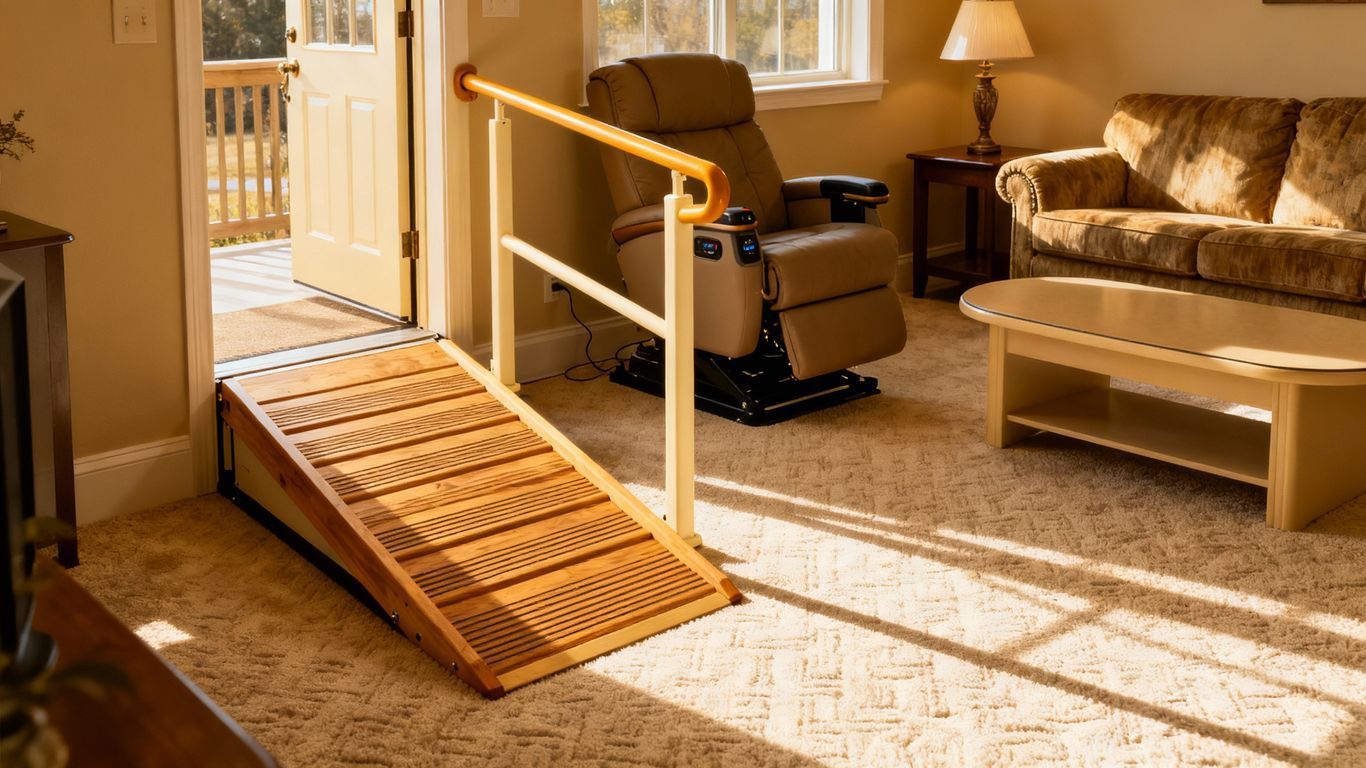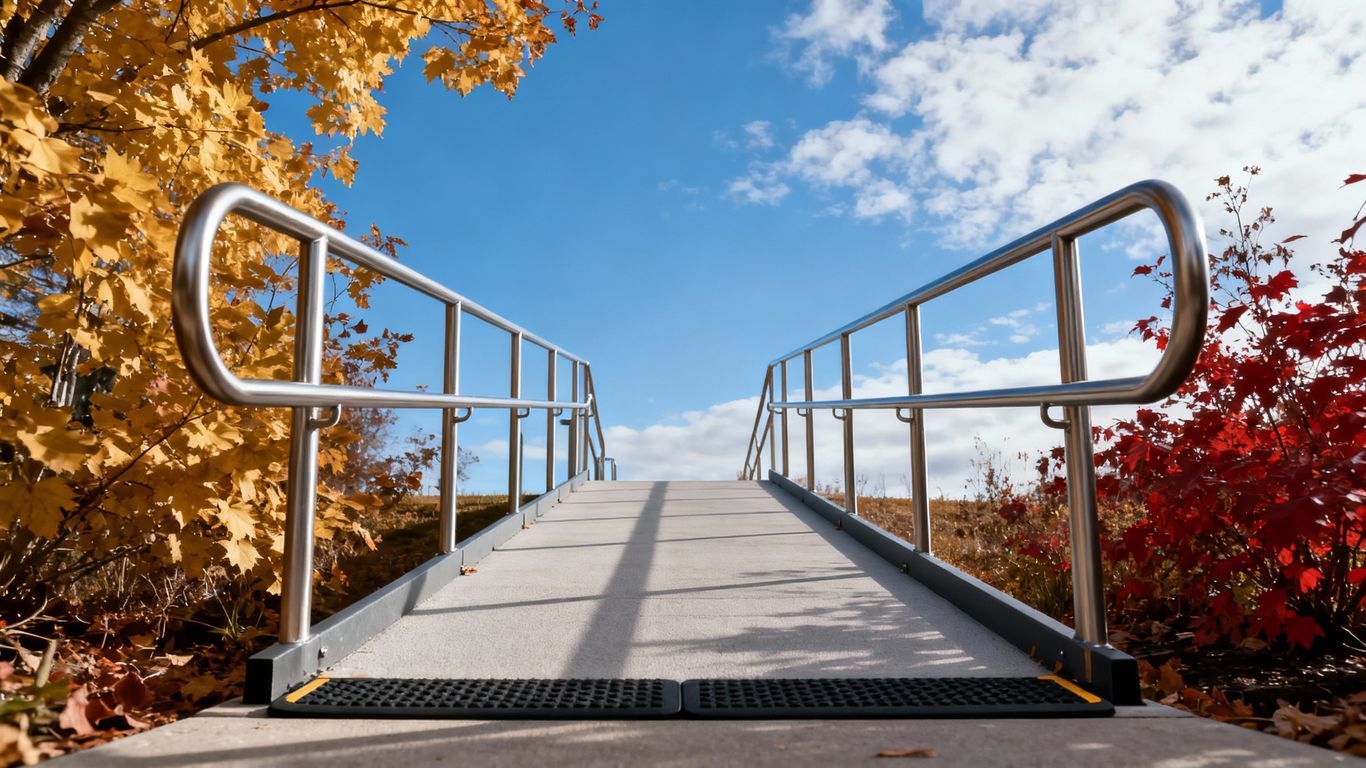5 Signs It's Time to Replace Your Wheelchair Lift in LaFayette, Ringgold, or Chattanooga


If you rely on a wheelchair lift for mobility, you want it to work smoothly and safely. Over time, these lifts can show signs of wear and tear, and knowing when to replace them is important. Here are five signs of failing wheelchair lift that you shouldn't ignore, especially if you live in LaFayette, Ringgold, or Chattanooga.
Key Takeaways
- Watch for frequent breakdowns; they can signal a bigger problem.
- Listen for any weird noises; they often indicate mechanical issues.
- If your lift is moving slower than usual, it might need replacing.
- Rust or corrosion is a bad sign that your lift is deteriorating.
- Malfunctioning safety features are a serious red flag and need immediate attention.
1. Frequent Breakdowns
Okay, let's be real. If your wheelchair lift is constantly out of service, that's a major red flag. It's not just an inconvenience; it can seriously impact your independence and safety. I mean, who wants to be stuck waiting for a repair person all the time? It's frustrating, to say the least.
A lift that's always breaking down is a sign of underlying issues that need to be addressed. Ignoring these problems will only lead to more frequent and potentially more costly repairs down the road. Plus, it's a safety hazard. You don't want to be relying on something that could fail at any moment.
Here are some things to consider if you're dealing with constant breakdowns:
- How often is it happening? Is it once a month, once a week, or even more frequently?
- What kind of repairs are needed? Are they minor fixes, or are they major component failures?
- What's the age of the lift? Older lifts are naturally more prone to problems.
Think of it like this: a car that's always in the shop. Eventually, you have to ask yourself if it's worth continuing to pour money into it, or if it's time to get a new one. The same goes for your wheelchair lift.
If you're experiencing frequent breakdowns, it's time to call in a professional for a thorough inspection. They can assess the situation and give you an honest opinion about whether it's worth repairing or if it's time to consider a wheelchair lift replacement. Don't wait until it leaves you stranded!
2. Unusual Noises
Okay, so your wheelchair lift is making some weird sounds? That's not a great sign. It's like when your car starts clunking – you know something's up. Ignoring it won't make it go away; it'll probably just get worse.
Pay close attention to what kind of noises you're hearing. Is it a grinding sound? A squeak? A loud bang? Each sound can tell you something different about what's going wrong. For example:
- Grinding usually means metal on metal, which could be a worn-out bearing or something rubbing that shouldn't be.
- Squeaking often points to a lack of lubrication. Maybe something just needs some grease.
- Banging? That's usually bad. Could be something loose or broken.
It's a good idea to keep a log of when you hear the noises and what they sound like. This can be super helpful when you call someone to come take a look at it. The more information you can give them, the easier it will be for them to diagnose the problem. Plus, it'll help you remember exactly what's been going on over time.
Don't just turn up the TV to drown out the noise. Address it!
3. Slow Operation
Is your wheelchair lift moving slower than it used to? It might not seem like a big deal at first, but slow operation can actually be a sign of a more serious problem brewing.
A lift that's taking its time could indicate wear and tear on the motor, hydraulic issues, or even electrical problems. Ignoring this can lead to complete failure, leaving you stranded. Plus, it's just plain inconvenient. Nobody wants to wait longer than necessary for their lift to do its job.
Here are a few things to consider:
- How long has it been since the lift was serviced?
- Has the speed gradually decreased, or did it happen suddenly?
- Are there any other unusual symptoms, like strange noises or jerky movements?
Addressing slow operation promptly can prevent further damage and ensure your wheelchair lift remains a reliable part of your daily life. Don't wait until it grinds to a halt – get it checked out!
If you're experiencing boom lift problems, it's time to call a professional.
4. Rust or Corrosion
Okay, so rust and corrosion. Not good. It's like the wheelchair lift is slowly turning back into the raw materials it came from. It's a sign of age, sure, but also a sign that things might be getting unsafe. I mean, think about it – structural integrity is kind of important when you're lifting someone.
If you're seeing rust, it's time to pay attention.
Ignoring rust is like ignoring a leaky faucet; it only gets worse over time, and the longer you wait, the bigger the problem (and the bill) becomes.
Here's what to look for:
- Flaking paint or bubbling under the paint.
- Visible rust spots, especially around joints and welds.
- Corrosion on any moving parts, like cables or chains.
5. Safety Features Malfunction
Okay, so this one is a big deal. If the safety features on your wheelchair lift aren't working right, you need to address it immediately. We're talking about things that are there to protect you, and if they fail, the consequences can be serious.
A malfunctioning safety feature is a major red flag. Don't ignore it, hoping it will go away. It won't.
Here are some things to watch out for:
- Faulty sensors: If the lift isn't stopping when it should, or if it's moving when it shouldn't, the sensors might be bad. These sensors are there to detect obstructions and prevent accidents.
- Broken seatbelts or restraints: These are designed to keep you secure on the platform. If they're damaged or not latching properly, they won't do their job. Get them fixed or replaced ASAP.
- Emergency stop button failure: This is a critical safety feature. Test it regularly to make sure it works. If it doesn't stop the lift immediately, there's a problem. You can get adaptive equipment services to fix this.
Ignoring safety issues is like playing with fire. It might seem okay for a while, but eventually, you're going to get burned. Don't take the risk. Get your lift checked out by a qualified technician if you suspect any problems with the safety features.
Sometimes, safety features in cars can stop working properly. This can be really dangerous because these features are there to keep us safe. If you notice any problems with your car's safety systems, it’s important to get them checked out right away. Don’t wait until it’s too late! For more tips on keeping your vehicle safe, visit our website today!
Wrapping It Up
So, if you notice any of those signs we talked about, it might be time to think about getting a new wheelchair lift. Safety and reliability are super important, and you don’t want to risk it with an old lift that’s not working right. Whether you’re in LaFayette, Ringgold, or Chattanooga, there are options out there. Take your time, do some research, and find a lift that fits your needs. Remember, it’s all about making life easier and safer for you or your loved ones.
Frequently Asked Questions
How do I know if my wheelchair lift needs to be replaced?
Look for signs like frequent breakdowns, strange noises, slow movement, rust, or safety features not working.
What should I do if my lift breaks down often?
If your lift breaks down a lot, it might be time to think about getting a new one. Frequent issues can mean it's old or worn out.
What kind of unusual noises should I be worried about?
Listen for grinding, squeaking, or clunking sounds. These noises can indicate that something is wrong.
Is it normal for a wheelchair lift to operate slowly?
No, if your lift is moving slower than usual, it could mean there's a problem that needs to be checked.
How can I tell if there's rust or corrosion on my lift?
Check for any flaky spots or discoloration on the metal parts. Rust can weaken the lift over time.
What safety features should I check on my wheelchair lift?
Make sure the emergency stop, safety sensors, and other features are working properly. If they fail, it's a serious safety risk.










